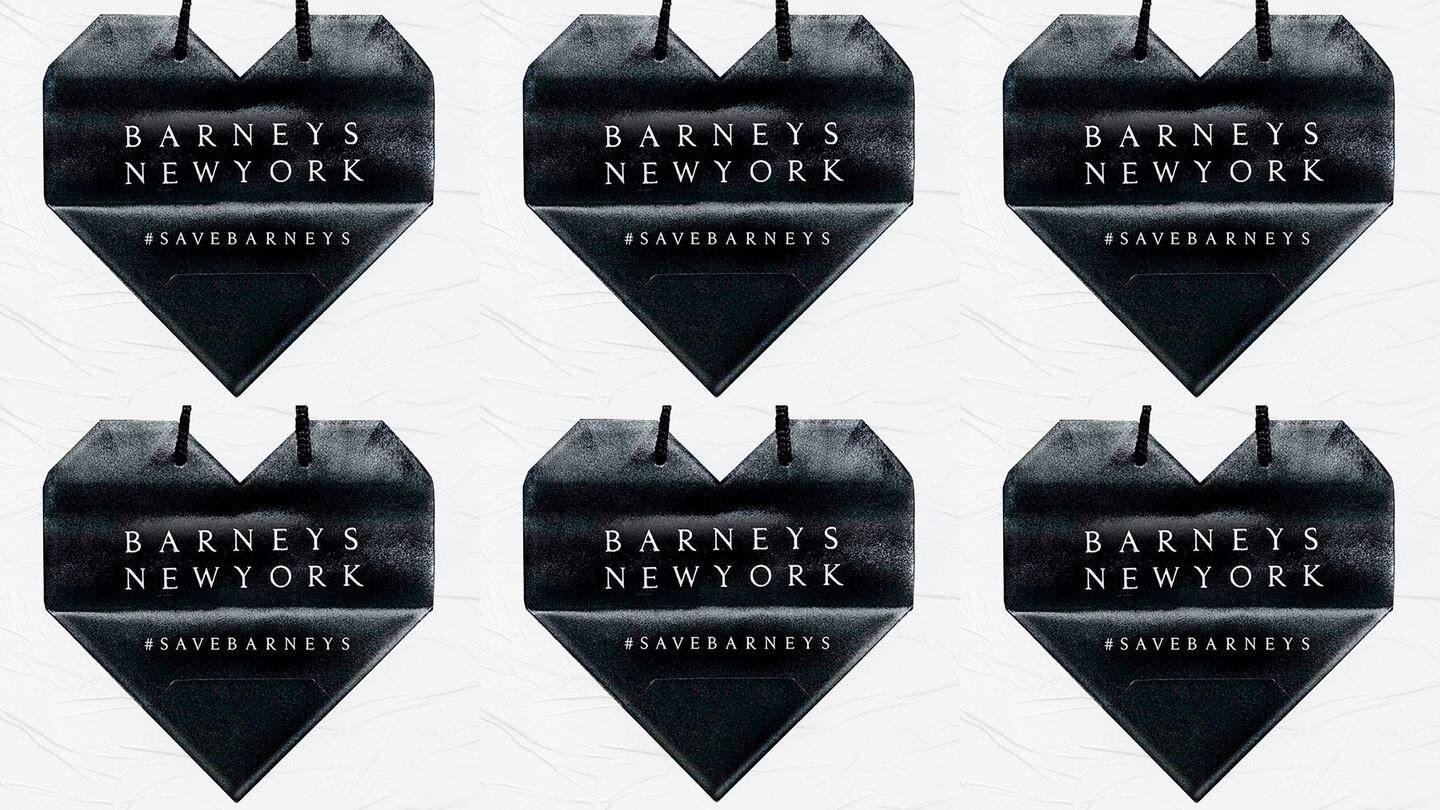
The Business of Fashion
Agenda-setting intelligence, analysis and advice for the global fashion community.

Agenda-setting intelligence, analysis and advice for the global fashion community.

NEW YORK, United States — On Thursday, after a lunch meeting spent in Airplane Mode, I powered up my phone to discover a rush of texts declaring Authentic Brands Group (ABG) the winning bidder in the battle to buy Barneys New York. Cathaleen Chen, our reporter following the months-long drama, Slacked me the real story. Despite declaring victory, ABG had not officially won the bid just yet; other contenders still had until October 31 to one-up the firm, best known for acquiring brands like Sports Illustrated and Juicy Couture and licensing their names to others.
Will the Barneys drama ever end? Who knows, but what many industry insiders seem unwilling to accept is that an acquisition by ABG is probably the most practical solution. There are plenty of possibilities for licensing the Barneys name. Saks Fifth Avenue's owner, Hudson's Bay Company, could pay to use the Barneys brand to open (or keep open) stores. Barneys could pop up in airport kiosks à la Harrods, shilling black vinyl bags to tourists seeking last-minute souvenirs. But these scenarios are almost beside the point.
A long time ago, the owners of Barneys decided to get out of financial trouble by taking on outside investors, and those investors decided to get out of financial trouble by taking on other investors. Then it happened again, and again. Barneys could have pulled a MatchesFashion in the mid-aughts, pivoting away from physical retail and investing in e-commerce. But it didn't, and now its ability to compete in the tough business of multi-brand retail is sharply reduced.
ABG will be able to wring out more value from Barneys than the bidders who want to "save" the retailer. None of them have presented a plan that indicates they intend to do anything radically different than has been done in the past, and that Barneys won't be in a similar situation a decade from now as it was a decade ago.
ADVERTISEMENT
The irony that Nordstrom opened its first-ever women's store in New York City on the day the latest twist in the Barneys saga surfaced is not lost. Nordstrom, still run by the family that founded it, has spent the past 15 years building a high-low retail mecca, not only targeting Upper West Side moms who wear "the Amazon Coat" and covet faux-Berber jackets from Something Navy but also the fashion crowd lured by creative director Olivia Kim's rainbow-bright Nike collaboration and blink-or-you'll-miss-it installations.
For years, it seemed that the Seattle-based Nordstrom would steer clear of New York City, that perhaps its management knew better than to try competing in America's toughest retail market. However, Nordstrom's success in moving upmarket gave them confidence and, in 2012, they struck a deal to take on Manhattan. Did they know that American retail would blow up between now and then? Of course not, and last year's failed bid by the family to take the department store chain private signalled that they'd prefer to ride through the next few years without the scrutiny of the public market.
But Nordstrom has displayed more foresight than many of its competitors, experimenting with new business models, keeping the majority of markdowns to fixed times of the year, investing in technology and understanding that consumers now easily glide across price points. Management also seems to get that the current obsession with “experience” — a coffee shop in one corner, a live musical act in another — is ultimately less important than service: things like making it simple to shop online, and making it even simpler to return items in store.
It’s not like Nordstrom has so much exclusive product. But it seems to be working a little harder to make buying that product easy. The Nordstrom Local concept — a little brown box of a store where shoppers can pick up online orders, drop off packages (not just Nordstrom returns!), get their trousers hemmed and maybe have a manicure — is working, and the company is opening more of them. It’s not sexy. It’s just practical, and, in a very modern way, luxurious.
At Nordstrom's opening party on Tuesday night, the floors were crowded with top clients, vendors and other industry types all judging away. There were a few potential Barneys owners there, too, not to mention Gene Pressman — grandson of the founder of Barneys — who ran the store in the 1980s and 1990s. When Pressman was interviewed over the summer by American GQ writer Rachel Tashjian, he said if he had a store again, he'd do it differently: "I'm done with hip windows."
Others must share his sentiment. Why, then, aren’t more people working on making something new, rather than attempting to resurrect the past? Perhaps it’s time for everyone to move on.
Retailed Articles:
[ Authentic Brands Declares Victory in Barneys Bid, But It's Not a Done DealOpens in new window ]
[ Why Kith's First Investor Hasn't Given Up on Saving BarneysOpens in new window ]
As the German sportswear giant taps surging demand for its Samba and Gazelle sneakers, it’s also taking steps to spread its bets ahead of peak interest.
A profitable, multi-trillion dollar fashion industry populated with brands that generate minimal economic and environmental waste is within our reach, argues Lawrence Lenihan.
RFID technology has made self-checkout far more efficient than traditional scanning kiosks at retailers like Zara and Uniqlo, but the industry at large hesitates to fully embrace the innovation over concerns of theft and customer engagement.
The company has continued to struggle with growing “at scale” and issued a warning in February that revenue may not start increasing again until the fourth quarter.